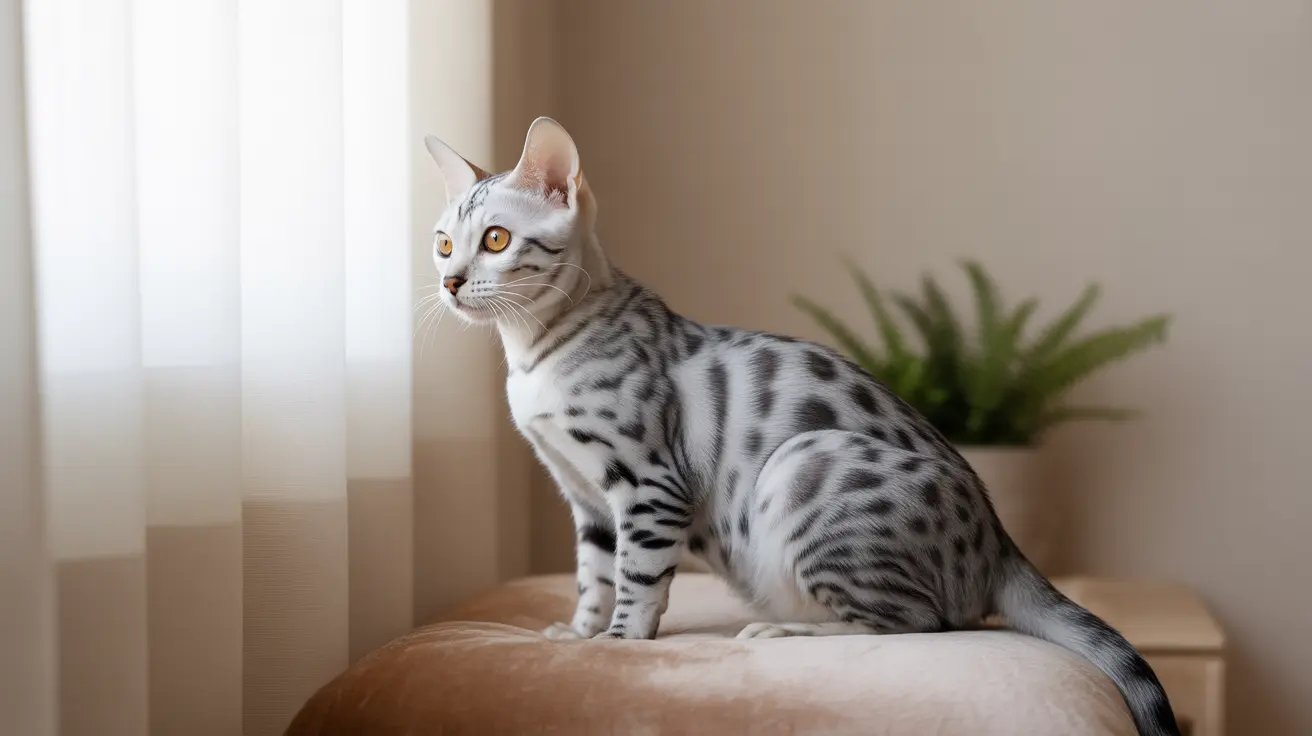The Remarkable Sensory World of Cats
Cats possess extraordinary sensory capabilities that far exceed human perception. Their hearing range extends from 48 Hz to 85 kHz, allowing them to detect sounds that are completely inaudible to human ears. This means your cat might be tracking the movement of mice, insects, or even the subtle vibrations of pipes within your walls.
Additionally, cats' visual acuity is remarkably different from ours. They can see clearly in light six times dimmer than what humans need, and their eyes are specially adapted to detect even the slightest movement. What appears to be an empty wall to you might be alive with fascinating micro-movements to your feline friend.
Natural Hunting Instincts at Work
Wall-staring behavior often ties directly into a cat's natural hunting instincts. Even well-fed indoor cats retain their predatory nature, and this fixed staring can be part of their hunting sequence. They might be:
- Tracking tiny insects you can't see
- Following dust particles in sunbeams
- Monitoring subtle shadows or reflections
- Listening for movement inside the walls
Environmental Factors and Stimuli
Sometimes, the explanation is simply environmental. Modern homes are full of subtle sounds and vibrations from:
- Electrical wiring
- Plumbing systems
- HVAC equipment
- Smart home devices
Your cat might be responding to these environmental stimuli that go unnoticed by human senses. Changes in air pressure, temperature variations, or even electromagnetic fields could capture their attention.
When to Be Concerned
While wall-staring is usually harmless, certain patterns might indicate underlying health issues. Watch for these warning signs:
- Excessive or obsessive staring
- Accompanying unusual vocalizations
- Signs of disorientation
- Changes in normal behavior or routine
In older cats especially, persistent wall-staring combined with other behavioral changes could indicate cognitive dysfunction syndrome (CDS), similar to dementia in humans. If you notice these patterns, consult your veterinarian.
Frequently Asked Questions
Why does my cat stare at walls even when there's nothing visible?
Your cat may be detecting sounds, movements, or vibrations that are imperceptible to humans. Their superior sensory abilities allow them to notice things we cannot, including subtle changes in light, tiny insects, or sounds within the walls.
Can cats hear or see things inside walls that humans can't?
Yes, cats can hear frequencies up to 85 kHz (compared to humans' 20 kHz limit) and see in much dimmer light. This means they can detect rodents, insects, or mechanical sounds within walls that are completely inaudible to humans.
When should I worry if my cat is staring at walls frequently?
Be concerned if wall-staring is accompanied by disorientation, unusual vocalizations, changes in eating or sleeping patterns, or other behavioral changes. These could indicate underlying health issues requiring veterinary attention.
Could staring at walls be a sign of cognitive decline or medical issues in cats?
Yes, especially in older cats, excessive wall-staring combined with confusion, changes in behavior, or disorientation could indicate cognitive dysfunction syndrome or other medical conditions. Consult a veterinarian if you notice these symptoms.
How can I keep my cat entertained to prevent bored wall-staring behavior?
Provide environmental enrichment through interactive toys, climbing structures, window perches, and regular play sessions. Puzzle feeders and rotating toys can help keep your cat mentally stimulated and reduce boredom-related behaviors.
Conclusion
While wall-staring behavior in cats can seem strange to us, it's usually a natural expression of their keen senses and hunting instincts. Understanding this behavior helps us better appreciate our feline companions' unique perception of the world. However, always monitor for changes that might indicate health issues, and provide plenty of environmental enrichment to keep your cat mentally and physically stimulated.






